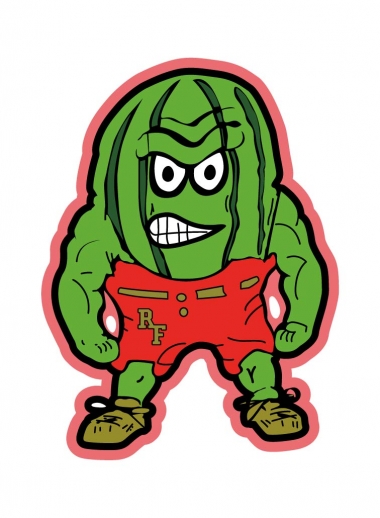3. Traditional Chinese Elegance
Traditional Chinese vector art embraces the heritage of ink painting and calligraphy. Its color palette is dominated by shades of black, brown, and muted greens and blues. These colors evoke a sense of tranquility and connection with nature. Through this palette, Chinese vector art captures the essence of ancient scrolls and poetic landscapes, a journey through time and tradition.
4. Industrial Coolness
Industrial vector art leans towards a palette of stark, cold colors. Predominantly silver, white, and metallic hues, it evokes the world of machinery and technology. The choice of colors is deliberate, emphasizing precision and functionality. Think of technical diagrams or logos for high-tech products; they often employ this palette to convey a sense of reliability and innovation.

5. Varied Rendering Techniques
Beyond the choice of colors, different vector art styles also employ varied rendering techniques to create their distinct visual impact. For instance, anime styles favor flat, solid colors with minimal gradients, while watercolor-inspired vector art embraces the subtlety of gradients, simulating the organic flow of traditional watercolor painting.
The Dance of Lines
Lines are the very foundation of vector art. They define shapes, structures, and emotions. Let's scrutinize how different vector art styles employ lines to convey their unique messages.
1. Fluent and Rounded Anime Lines
In the realm of anime, lines are fluid and rounded. Characters' features, hair, and clothing are defined by graceful, flowing lines. These lines are not afraid of variation, shifting from fine to bold, emphasizing curves and dynamic motion. They contribute to the soft, inviting aesthetics that are the hallmark of anime. Think of the rounded contours of Sailor Moon or the whimsical swirls of Studio Ghibli characters.
2. Chinese Vector Art's Graceful Precision
Chinese vector art finds its strength in the balance between softness and precision. The lines are meticulous, capturing the essence of traditional Chinese brushwork. The key is in the subtlety of line variation, with controlled starts and stops, conveying a sense of grace and inner strength. Imagine the elegance of a traditional Chinese painting, where the brush captures the essence of the subject with every stroke.
3. Industrial Vector Art's Bold Ruggedness
Industrial vector art is characterized by bold, rugged lines. These lines are sharp and unapologetic, defining machinery, architecture, and precision. There's a distinct lack of subtlety here; it's all about conveying strength, power, and structure. Picture the bold lines of a blueprint or the aggressive angles of a mechanical diagram.
4. Expressing Volume and Space
One of the fascinating aspects of vector art is how lines are used to create the illusion of volume and space. Whether it's the fine lines of anime art shaping a character's face or the chunky lines of industrial art defining a machine's components, the careful modulation of line thickness imparts depth and three-dimensionality to the artwork.
The Art of Detail
Details are where the story comes to life. They can be intricate or minimal, but they always play a crucial role in defining the style and narrative of vector art.
1. Playful Simplicity of Cartoon Style
Cartoon styles thrive on simplicity. They often omit extraneous details, focusing on capturing the essential features of characters or objects. Exaggerated eyes, simplified facial expressions, and minimalistic backgrounds are common elements. This approach enables viewers to connect quickly with the characters or concepts and is widely used in web design, logos, and children's book illustrations.
2. The Realism of Photorealistic Art
On the opposite end of the spectrum, photorealistic vector art revels in detail. It meticulously recreates textures, surfaces, and intricate patterns. Every facet of the subject is examined and portrayed with precision, delivering a sense of realism that can be awe-inspiring. It's often found in architectural renderings, product visualizations, and scientific illustrations.
3. Stylized Interpretations
Beyond simplicity and realism, vector art styles can also offer unique stylized interpretations of details. For instance, the anime style may exaggerate certain facial features like eyes or mouths for expressive purposes, while industrial vector art might meticulously render intricate machinery components in a simplified, abstract manner, emphasizing their functionality.
The Composition Conundrum
Composition is the art of arranging elements within a frame to convey a specific message or emotion. Different vector art styles employ various composition techniques to tell their stories.
1. Classical Stability
Classical vector art compositions often exude stability and symmetry. They embrace classical design principles like the rule of thirds, balanced proportions, and harmonious arrangements. These compositions are reassuring, offering viewers a sense of order and tradition. Think of classical paintings and portraits, where subjects are often centered and surrounded by balanced elements.
2. Modern Dynamism
Modern vector art compositions break free from tradition. They're dynamic and often asymmetric, designed to create a sense of movement and energy. These compositions are visually exciting and can inject a sense of urgency or excitement into the viewer. Consider the cover art of contemporary magazines, where bold angles, unusual cropping, and daring arrangements abound.
3. Chinese Harmony
Chinese vector art compositions are deeply rooted in the philosophy of balance and harmony. They follow the principles of Feng Shui, striving for a harmonious balance of elements and a seamless connection between the subject and its surroundings. These compositions create a sense of unity and tranquility. Picture a traditional Chinese landscape painting, where mountains, rivers, and pavilions are perfectly arranged to achieve a sense of oneness with nature.
4. The Power of Scaling, Perspective, and Spacing
In addition to the arrangement of elements
, scaling, perspective, and spacing are essential tools in the vector artist's kit. Different styles use these techniques to convey their unique messages. For instance, modern vector art may play with dramatic scaling to create visual impact, while Chinese vector art often employs subtle perspective to draw viewers into the artwork's depth.
The Mosaic of Style Elements
Beyond colors, lines, details, and compositions, vector art styles are also defined by specific style elements or motifs that distinguish them. Let's explore some of these elements.
1. Chinese Cultural Icons
Chinese vector art often incorporates cultural icons such as the Chinese zodiac, traditional clothing, or calligraphy. These elements ground the artwork in Chinese culture and history, inviting viewers to connect with its rich heritage.
2. Industrial Elements
Industrial vector art embraces the aesthetics of machinery and technology. Gears, pipes, circuitry, and metallic textures are recurring motifs, conveying a sense of precision, functionality, and innovation.
3. Playful Anime Motifs
Anime vector art may feature playful motifs like dolls, musical notes, or heart-shaped patterns. These elements enhance the whimsy and emotional depth of the characters and stories they depict.
The Right Style for the Right Occasion
Finally, it's essential to understand the suitability of each vector art style for various creative projects. Different styles resonate with different audiences and purposes.
1. Expressive Anime Style
The vibrant, emotional anime style finds its niche in projects where emotion and connection are paramount. It's a popular choice for website logos, posters, and any medium where evoking strong emotions is key.
2. Traditional Chinese Elegance
Traditional Chinese vector art brings a touch of class and cultural significance to projects in the cultural sector. It's a natural fit for products and services tied to Chinese culture, history, and traditions.
3. Industrial Precision
Industrial vector art's clarity and precision make it ideal for technical documentation, machinery diagrams, and any project where clear communication of complex information is essential.
In conclusion, the world of vector art is a rich tapestry of styles, each with its own palette of colors, dance of lines, approach to details, composition philosophy, and unique style elements. Understanding these distinctions allows artists, designers, and enthusiasts to harness the power of vector art effectively. Whether you're creating a whimsical web design, an evocative poster, or a technical diagram, choosing the right vector art style can elevate your project and engage your audience on a deeper level.



